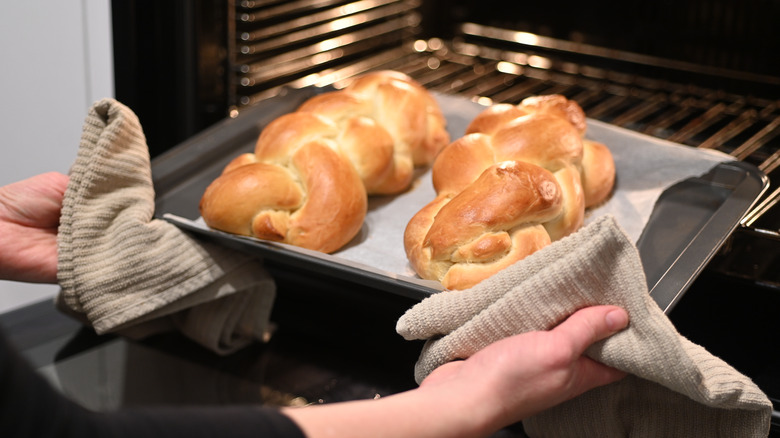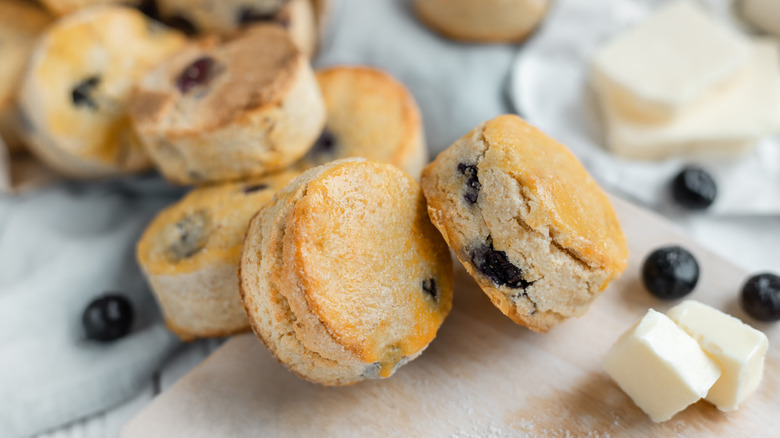What A Well-Timed Milk Wash Will Do To Your Homemade Bread Crust
Making homemade bread is quite a culinary accomplishment and requires attention to detail every step of the way. Once your dough is looking good and you're heading toward the oven, there is one more crucial step: brushing your dry loaf with a traditional egg wash.
This is the only way to create that beautiful sheen and browning on top of your crust, right? You might be surprised to learn that you have multiple options when it comes to washes for your baked goods, and applying a milk wash might just be the best option for your dish.
A milk wash is as simple as brushing milk onto your dough. It can be applied either before baking or minutes before your culinary creation is set to come out of the oven, with each method yielding different results for the final dish.
There are many reasons bakers might want to use an egg wash substitute, from the high cost of eggs to allergen issues, and there are several egg wash alternatives that achieve a similar result.
Milk wash takes it a step further, though, and imparts a delicious flavor to your crust in addition to a subtle sheen.
As tasty as it looks
Although it encourages browning, a milk wash won't make your dough bake up shiny like egg wash does (via Epicurious). Using a milk wash is best for doughs baked at lower temperatures, like dinner rolls, because in addition to the nice brown coloring, the milk will caramelize and add an extra level of flavor to your dough, according to Food52. This is especially valuable for recipes like scones, which aren't typically meant to be shiny.
Bakers should also know that the type of milk they use will make a difference to their dish's appearance. According to The Kitchn, using higher-fat milk for milk wash produces a deeper color. Heavy cream can also be brushed onto crusts for a slightly shinier outcome.
One of the most important tips when it comes to applying a milk wash is simple: Timing is everything. While egg washes, and some milk washes, are typically applied right before baking, this isn't the only way to do it. Popping the oven open to brush your milk wash onto the dough toward the end of your recipe's bake time will help produce a shinier, tender crust (via The Spruce Eats).
So whether you use eggs, milk, cream, or a combination of them, it's important to remember the difference a good wash can make to the appearance and taste of your baked goods.

